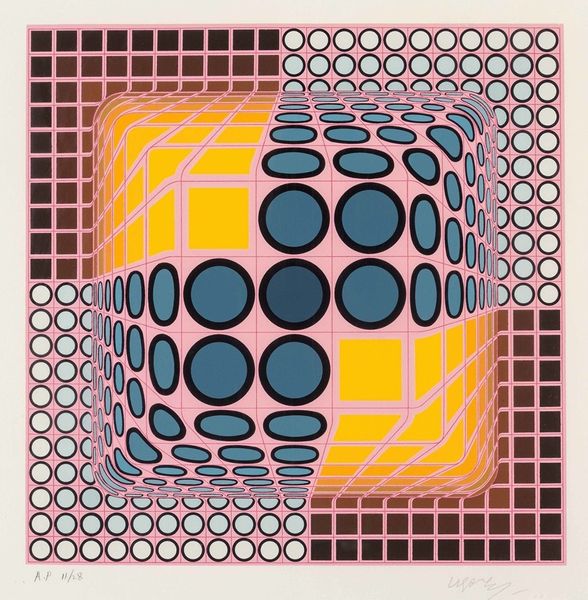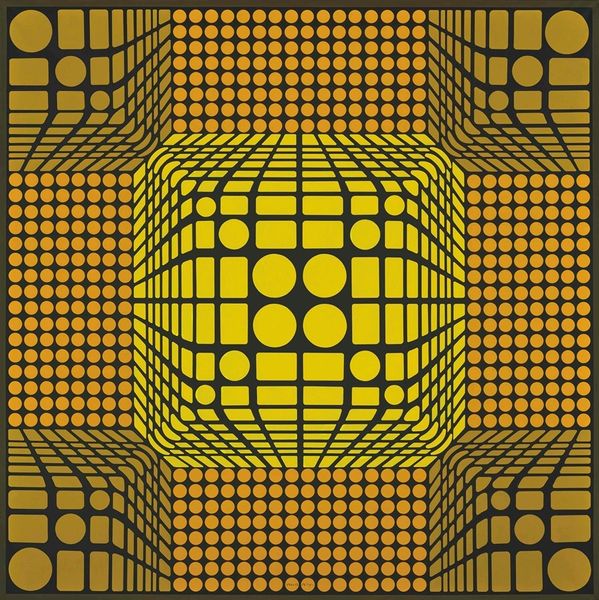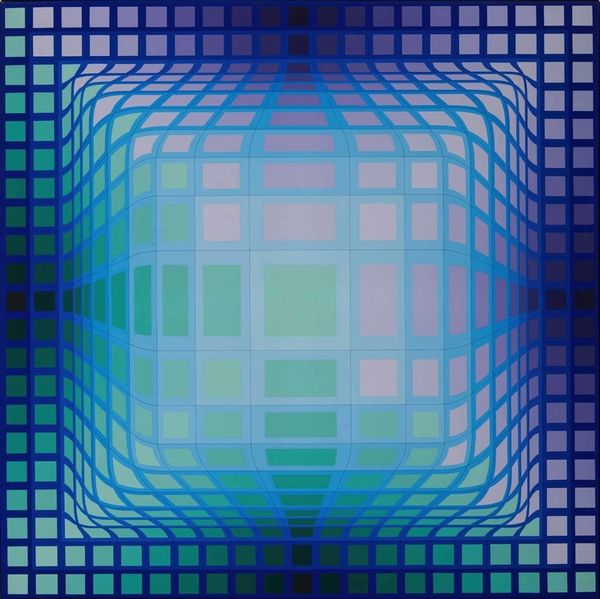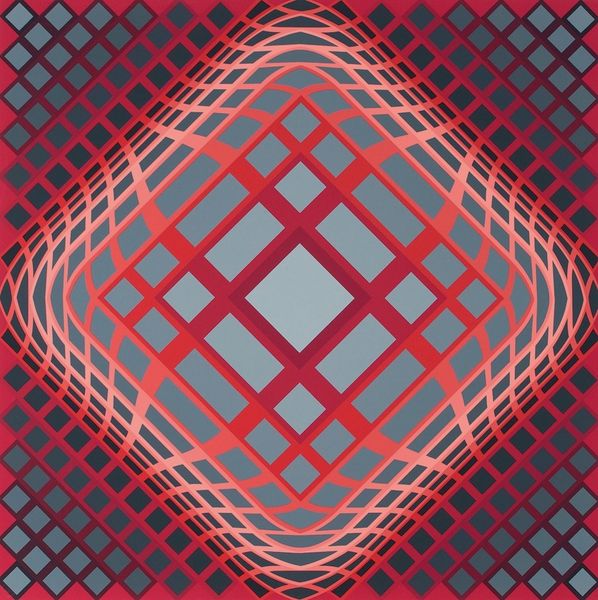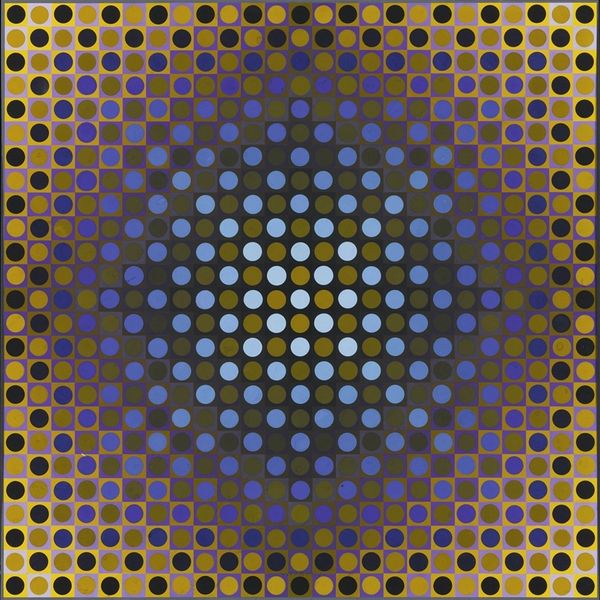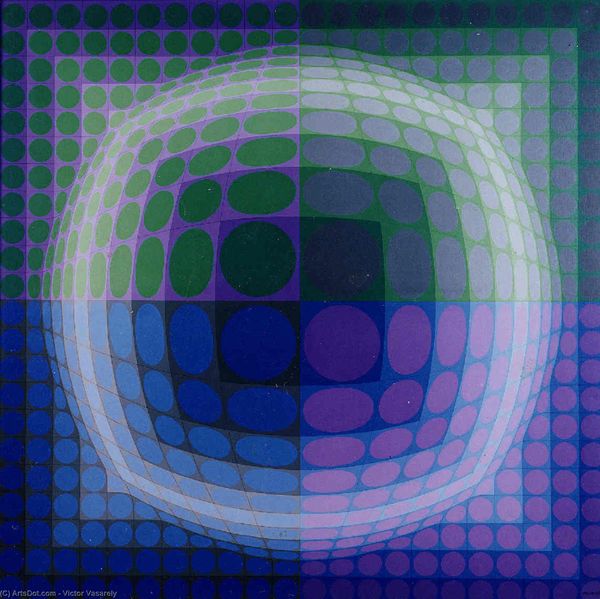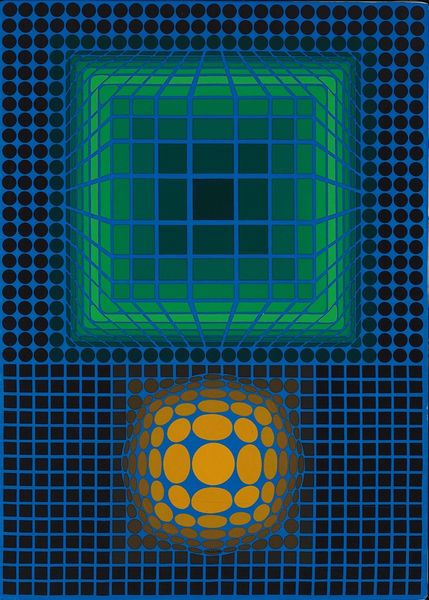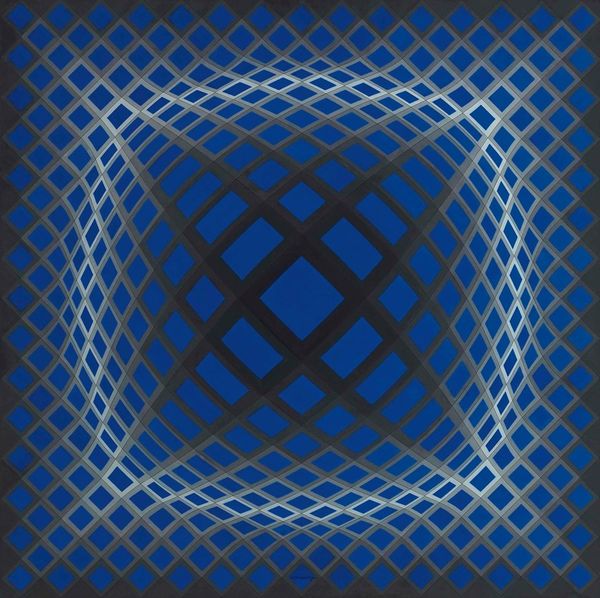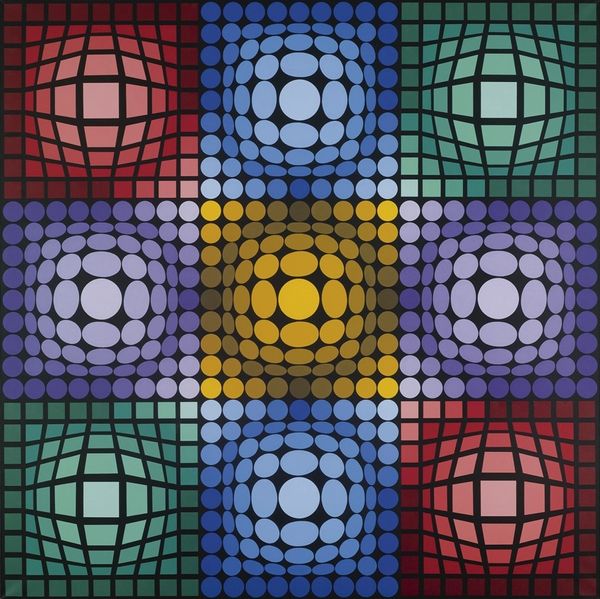
acrylic-paint
#
kinetic-art
#
op-art
#
acrylic-paint
#
geometric
#
abstraction
#
modernism
Copyright: Modern Artists: Artvee
Curator: Looking at this dynamic composition, we see "Maniok" by Victor Vasarely, created in 1985. It's an acrylic on canvas, representative of his Op Art style. Editor: Wow, it’s really arresting. My immediate impression is one of controlled chaos – the vibrant colours are playful, but the geometric arrangement keeps it grounded, almost mathematically precise. Curator: Vasarely was fascinated by the intersection of art and science. The illusion of depth, that bulging form – it really engages the eye, doesn’t it? Editor: It does. It reminds me of old scientific models demonstrating space or perhaps even cellular structures under a microscope. The green and lilac hues, set within strict lines, bring to mind almost clinical environments juxtaposed with organic forms, symbolizing how humans have been attempting to master nature. Curator: That reading aligns well with the artistic movements of the late 20th century, like Op Art, responding to rapid industrialization and the increasing presence of technology in everyday life. The grid, of course, speaks to systematization, rational thought, and even the pervasive influence of computers. Editor: Exactly. You can interpret it as an optimistic take on progress or perhaps as a somewhat cynical commentary on rigid structure squeezing natural shapes, which ties well with Op art's ambition to break away from older artistic values and express a changing, modern, faster world. The repeated squares and circles almost feel like a visual language, designed to convey data rather than depict reality. Curator: This makes me reflect on the social and cultural context of its time, mid-1980s when digital technologies were burgeoning, this piece captures the period's zeitgeist: blending order and a certain synthetic beauty in how abstraction was becoming something concrete, tangible, and measurable. Editor: Yes, "tangible" captures it! The colours, the symbols and everything it reminds us feels strangely tangible and solid for what, at first glance, might look like just abstract. A strong cultural message. Curator: Indeed. A compelling piece from Vasarely that gives you a new way to explore not only abstraction in general, but the development of Op art during the late modern era. Editor: Absolutely. It is as though Vasarely gives viewers today a timeless way of exploring what technological changes could bring to collective imaginaries and ways of seeing.
Comments
No comments
Be the first to comment and join the conversation on the ultimate creative platform.
